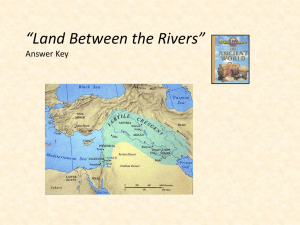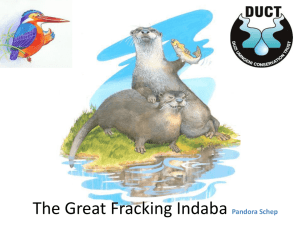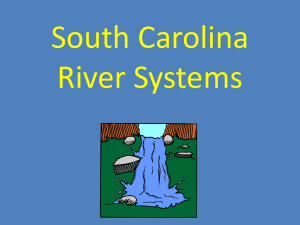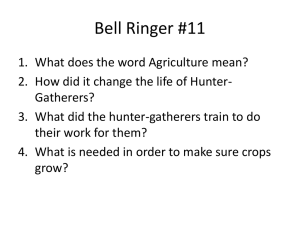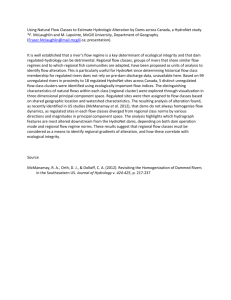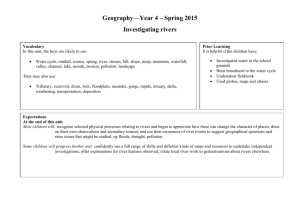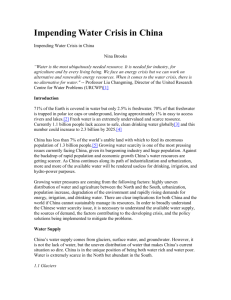Southwest Asia Activity 3x
advertisement
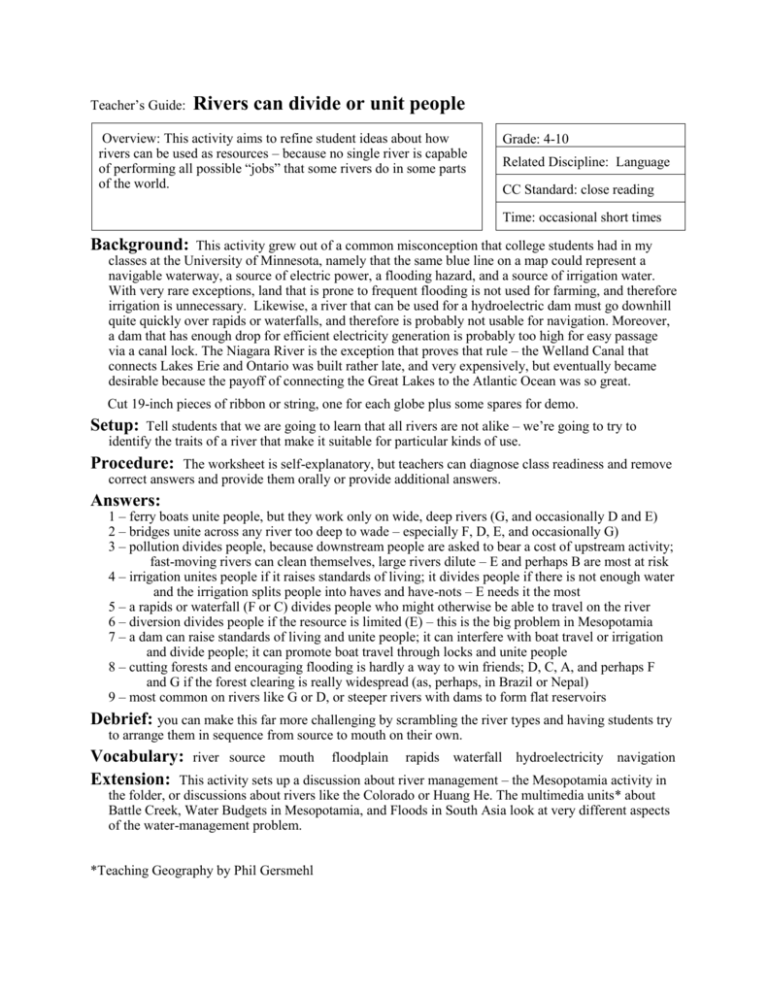
Teacher’s Guide: Rivers can divide or unit people Overview: This activity aims to refine student ideas about how rivers can be used as resources – because no single river is capable of performing all possible “jobs” that some rivers do in some parts of the world. Grade: 4-10 Related Discipline: Language CC Standard: close reading Time: occasional short times Background: This activity grew out of a common misconception that college students had in my classes at the University of Minnesota, namely that the same blue line on a map could represent a navigable waterway, a source of electric power, a flooding hazard, and a source of irrigation water. With very rare exceptions, land that is prone to frequent flooding is not used for farming, and therefore irrigation is unnecessary. Likewise, a river that can be used for a hydroelectric dam must go downhill quite quickly over rapids or waterfalls, and therefore is probably not usable for navigation. Moreover, a dam that has enough drop for efficient electricity generation is probably too high for easy passage via a canal lock. The Niagara River is the exception that proves that rule – the Welland Canal that connects Lakes Erie and Ontario was built rather late, and very expensively, but eventually became desirable because the payoff of connecting the Great Lakes to the Atlantic Ocean was so great. Cut 19-inch pieces of ribbon or string, one for each globe plus some spares for demo. Tell students that we are going to learn that all rivers are not alike – we’re going to try to identify the traits of a river that make it suitable for particular kinds of use. Setup: Procedure: The worksheet is self-explanatory, but teachers can diagnose class readiness and remove correct answers and provide them orally or provide additional answers. Answers: 1 – ferry boats unite people, but they work only on wide, deep rivers (G, and occasionally D and E) 2 – bridges unite across any river too deep to wade – especially F, D, E, and occasionally G) 3 – pollution divides people, because downstream people are asked to bear a cost of upstream activity; fast-moving rivers can clean themselves, large rivers dilute – E and perhaps B are most at risk 4 – irrigation unites people if it raises standards of living; it divides people if there is not enough water and the irrigation splits people into haves and have-nots – E needs it the most 5 – a rapids or waterfall (F or C) divides people who might otherwise be able to travel on the river 6 – diversion divides people if the resource is limited (E) – this is the big problem in Mesopotamia 7 – a dam can raise standards of living and unite people; it can interfere with boat travel or irrigation and divide people; it can promote boat travel through locks and unite people 8 – cutting forests and encouraging flooding is hardly a way to win friends; D, C, A, and perhaps F and G if the forest clearing is really widespread (as, perhaps, in Brazil or Nepal) 9 – most common on rivers like G or D, or steeper rivers with dams to form flat reservoirs Debrief: you can make this far more challenging by scrambling the river types and having students try to arrange them in sequence from source to mouth on their own. Vocabulary: river source mouth floodplain rapids waterfall hydroelectricity navigation Extension: This activity sets up a discussion about river management – the Mesopotamia activity in the folder, or discussions about rivers like the Colorado or Huang He. The multimedia units* about Battle Creek, Water Budgets in Mesopotamia, and Floods in South Asia look at very different aspects of the water-management problem. *Teaching Geography by Phil Gersmehl

